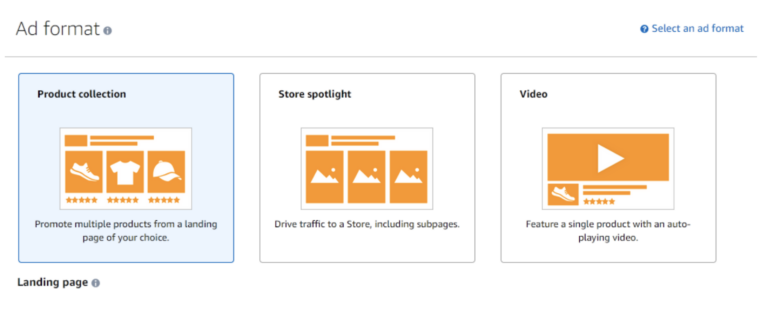Amazon officially launched Amazon Advertising in 2018 as a way for vendors to advertise their products using sponsored products, sponsored brands, and sponsored displays. They implemented a Pay Per Click model similar to Google in which the advertiser pays only when one of their ads is clicked. The cost per click is determined by a number of bidding signals such as the maximum amount an advertiser is willing to pay, the relevance of the search term, and the volume of competitors bidding on the same keyword.
While a product page’s SEO is vital to its organic results, SEO serves a different function than paid search—using both in concert with each other is an effective way to drive clicks and, from those, an increase in sales. Although fairly new to Amazon, paid search is becoming increasingly important as those are the ads that show above organic search results and also enable customers to discover your products on competitor product pages.
Amazon offers three types of advertising campaigns, and each differs in how it delivers ads: Sponsored Products, Brands, and Display.

Amazon Sponsored Product Campaigns
Sponsored Product ads are a pay-per-click model that allows you to either manually target specific keywords or let Amazon automatically match you with products and keywords it thinks are similar.
Manual sponsored product campaigns are superior for control over budget as well as when and where your products are shown. If your goal is ROAS, then manual campaigns are for you.
Automatic product campaigns have benefits, but they leave the targeting up to Amazon. For automatic campaigns to work well, you need to be looking at search terms and adding negative keywords and products actively.
Negative keywords are also an important part of a manual campaign as Amazon still has some leeway in terms of how it matches your products to customer search terms. Amazon uses keywords identified from your product listing to inform its view of what the product is, negative keywords let it know what it is not, making them just as important.
Manual and automatic ad campaigns can work in harmony by using the automatic campaign to cast a wide net and then adding productive search terms or products to a manual campaign.
To be able to run Sponsored Product ads for a product, that product must be winning the buy box. How to win a buy box will be the subject of another blog, but basically, you need to offer competitive pricing, have good reviews, and keep items in stock.
Sponsored Product ads display at the top of the search results page after a user has input a query. Look closely and you’ll see a small “Sponsored” label denoting a paid ad. If you use ASIN (Amazon Standard Identification Number) targeting, ads may also show up on competitors’ product pages, allowing searchers to compare and contrast products. This is an area in which quality SEO also comes into play.
So what are the benefits of a Sponsored Product campaign? You can use both keyword and ASIN targeting to narrow down exactly what searches you want your product to show up for. Targeting individual competitor products via ASIN enables you to keep your product visible, even when a user has already clicked on a competitor’s item.

Amazon Sponsored Brand Campaigns
Sponsored Brand ads show up at the very top of a search and highlight your brand and up to three products. They allow for some creativity as you can display your logo, a hero image and a headline of 30 characters or less.
Showing up at the top of the search page is a great way to get users to associate your brand with the search term they used. Similar to product campaigns, targeting is accomplished by the use of specific keywords, categories, or products.
Sponsored Brand ad campaigns help drive brand awareness, as well as drive users to your brand’s home page. This is advantageous in that you can create a cultivated experience away from competitor products.
Bidding on your own brand name is encouraged with this type of campaign as it helps build brand awareness and ensures a competitor isn’t winning the spot and potentially showing their own logo.
This is one of the areas within Amazon ads that allows some custom ad copy, a feature worth taking advantage of.
Amazon Sponsored Display Campaigns
Sponsored Display ad campaigns are similar to display ads in Google in that you can reach your audience on and off of the platform. The main difference between Display and Sponsored Product and Sponsored Brand campaigns lies in how a customer is targeted. Whereas Product and Brand use keywords, ASIN, and categories, Display campaigns use audience interests, behaviors, and previously viewed listings
Display campaigns are beneficial for their remarketing ability. After a user has viewed your product on Amazon, they are available to be remarketed to across the platform and on third-party sites.
This makes a Display campaign an excellent addition to Product and Brand campaigns, rounding out a holistic strategy.
When combined with a Sponsored Display campaign, an integrated approach can help maximize reach and brand recognition that, in the end, drives sales.
